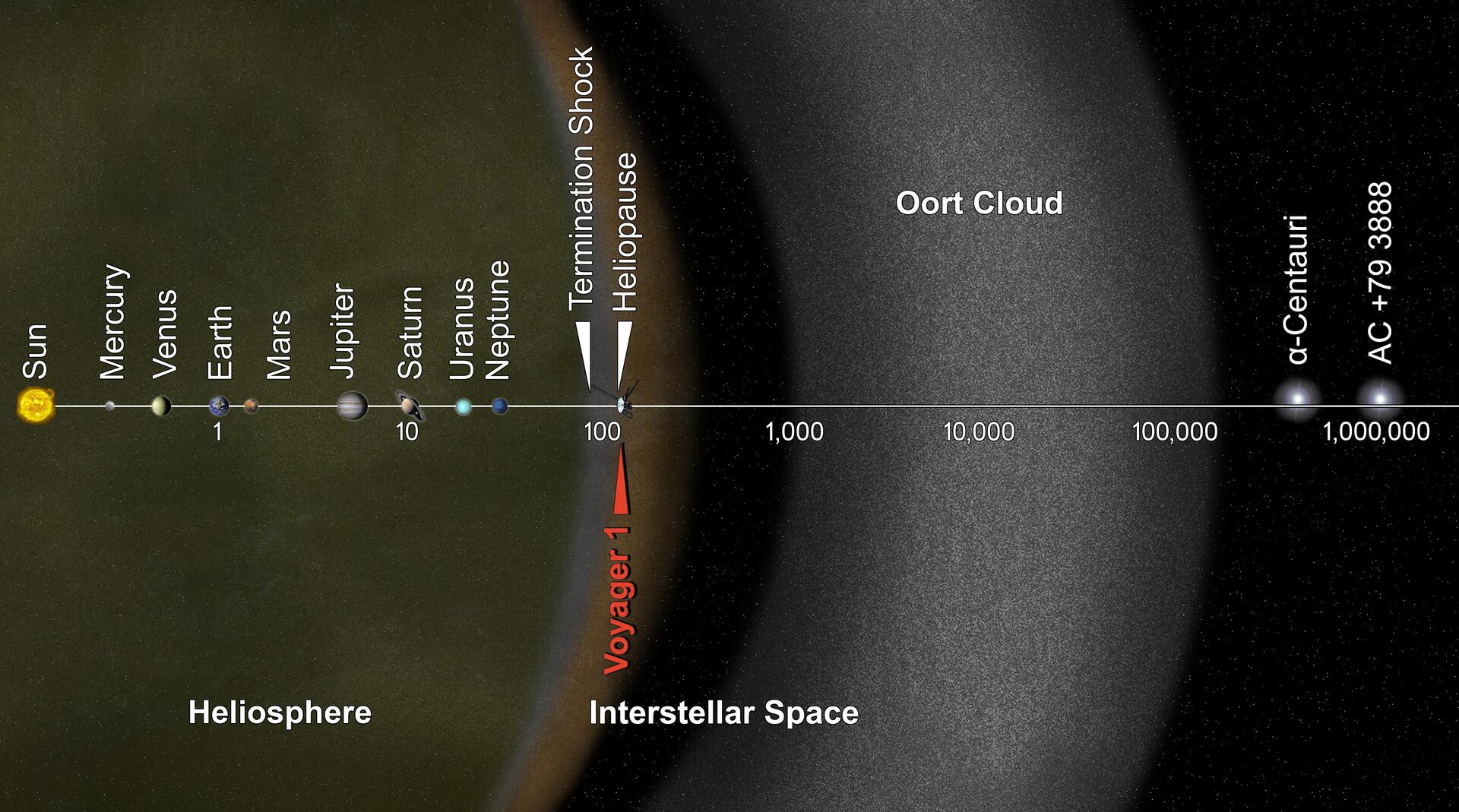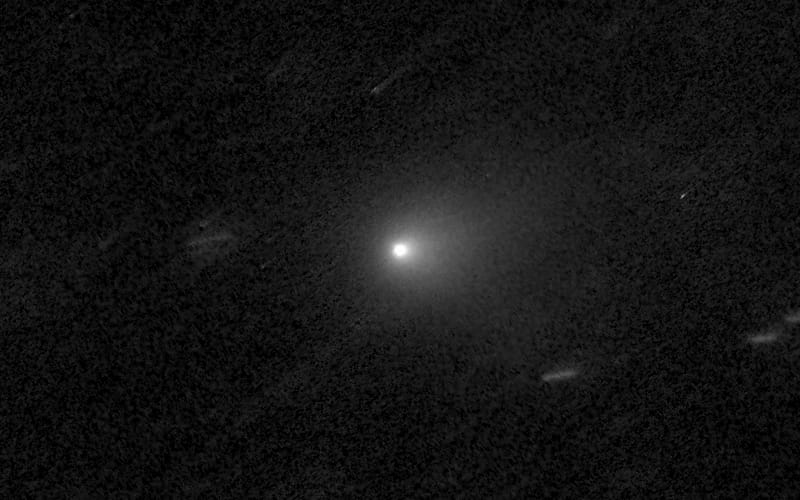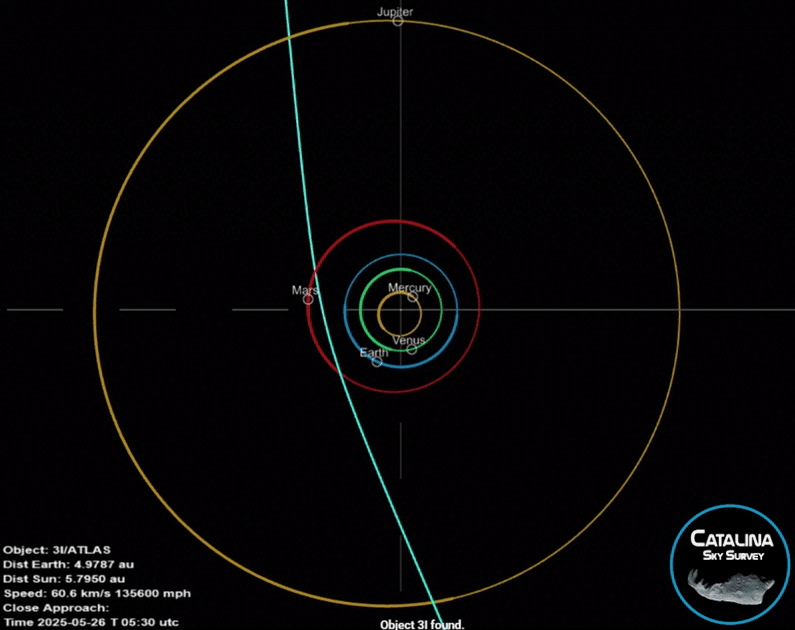- Three Alpha
- Posts
- We know it came from interstellar space, but how?
We know it came from interstellar space, but how?
We have now detected three interstellar objects, but how do we know they're not just regular comets?
Welcome to Three Alpha! Since last time: In the Solar System, a new object, nicknamed Ammonite, has been discovered which makes Planet Nine less likely to exist; in the Galaxy, Betelgeuse is likely to be part of a binary system; and in the Universe, a surprisingly massive black hole merger was detected via gravitational waves.
Meanwhile, in this edition of the newsletter we’re focusing on the how we know interstellar objects are really interstellar. Read on for more…
Rocks from beyond the Sun
This month, we discovered an interstellar comet just inside the orbit of Jupiter, travelling startlingly fast towards the inner Solar System. This is the third interstellar object ever discovered, and it is only recently that we have managed to find these fleeting, foreign visitors. But how do we know that is really what they are? How do astronomers, upon seeing a new point of light in the sky, determine that it is actually a rock from outside the Solar System? The answer involves taking plenty of photos and making use of our understanding of gravity. I’ll explain in a moment, but first let’s talk about interstellar objects.
Three Alpha is a free newsletter sent every other Saturday. Not subscribed yet? Make sure you don’t miss future editions by subscribing now!
The vast majority of the Solar System’s comets are located at its farthest reaches, in the Oort Cloud, halfway to the nearest star. Comets in the Oort Cloud formed much closer to the Sun, before being flung out to more distant orbits by gravitational interactions with the giant planets. Many of them ended up so far away they almost escaped the Sun entirely. If so many objects were sent flying out to the edge of the Sun’s gravity, how many might have been sent further? Those would exit the Solar System to spend eternity wandering the Galaxy alone. Occasionally, such interstellar objects might, entirely by chance, encounter other stars. They would zoom past far faster than any of the stars’ own comets, planets, or asteroids. After passing through, they would continue on, back to interstellar space. Any stellar system with giant planets could create interstellar objects, so there should be a lot of them wandering the Galaxy.

Distances from the Sun in astronomical units. The Earth is 1 AU by definition. The Oort Cloud stretches half way to the nearest star. Credit: NASA / JPL-Caltech
The first interstellar object to be detected in the Solar System was 1I/ʻOumuamua, which was detected in 2017 by a telescope in Hawaii called Pan-STARRS. ʻOumuamua was detected after it had already made its closest approach to the Sun, passing closer to the Sun than Mercury (0.26 AU vs Mercury’s 0.3 AU) before heading back out towards interstellar space. Now, eight years later, it is roughly as far from the Sun as Pluto’s furthest distance (just under 50 AU; Pluto is on a very eccentric (elongated) orbit and ranges from 50 AU to 30 AU, about the same as Neptune). In about three years, it will be further than the New Horizons probe, which was launched in 2006.
The second was 2I/Borisov, discovered in 2019 by amateur astronomer Gennadiy Borisov. Shortly after being discovered, it passed closest to the Sun at a distance of about 2 AU (outside the orbit of Mars, which is 1.5 AU). Moving even faster than ‘Oumuamua, Borisov is already 40 AU from the Sun.
And finally, the latest to be discovered is 3I/ATLAS. It was found earlier this month by the ATLAS astronomical survey and is currently 3.8 AU from the Sun (that’s inside the orbit of Jupiter, which is about 5 AU). It will make its closest approach in October, getting within 2 AU of the Sun and passing pretty close to Mars. This one is moving about twice as fast as Borisov, so it’s not going to stick around for long.

3I/ATLAS as imaged by Hubble. The fuzzy haze around it is a cometary coma (gas evaporated by the Sun’s heat). Credit: Processing by Nrco0e. Images taken by David Jewitt/NASA/ESA/Space Telescope Science Institute (STScI).
As you’ve hopefully realised, all the known interstellar objects are moving fast. And that is the first clue astronomers have that these objects did not come from inside the Solar System. From their speed alone, we know these objects are not going to stay in the Solar System because they’re travelling fast enough that they will inevitably escape the Sun’s gravity and make their own way in interstellar space. That alone doesn’t mean they came from interstellar space, though, as there are many examples of Solar System objects being ejected by interactions with the giant planets (for example C/1980 E1 Bowell, which was observed being ejected from the solar system by Jupiter in 1980). To figure out where an object came from, we need to be able to calculate its trajectory and trace it backwards to see if it is orbiting the Sun or not.
So how do we work out the trajectory of an object, when all we have are photos of it with nothing but distant stars as a point of reference? For that matter, how do we even know how fast it’s travelling? To work out what path an object is following (and how quickly it is moving) you need to know where it is (in three dimensions) at several times. But a photo only tells you what direction it is in, not how far away it is.

An animation of the predicted trajectory of 3I/ATLAS. Its closest approach to the Sun will be near Mars in October, and it will pass closest to Earth in December. Credit: CSS, D. Rankin; Video recorded and edited by User:Renerpho
It turns out photos are all we need to work out an object’s exact position, what path it is following, and how fast it is moving. The key is that we understand gravity (more or less) and so we know what effect the gravity of the Sun and the planets will have on an object (luckily we don’t even need to know how massive the object is for this to work, just like how it doesn’t matter how heavy a falling object is). So we can take multiple photos, telling us the direction to the object at multiple times, and then combine that with our understanding of orbital mechanics (thanks go to Kepler and Newton). As long as we have three or more photos, there will only be one orbit that is physically possible. And if that orbit is hyperbolic (i.e. an open curve, not a closed ellipse) then it is not in orbit around the Sun, and it must have come from outside the Solar System.
3I/ATLAS is the third interstellar object we have detected, but it certainly won’t be the last. Countless other interstellar objects are already passing through the Solar System, waiting for us to spot them. The Vera Rubin Observatory saw this one during its first observations (even though it wasn’t recognised at the time), and it is going to find dozens of these over the coming years. And even without Rubin, it seems we’re getting good at finding them.
Finally
A close up of an eruption from the Sun’s surface, courtesy of the Parker Solar Probe:
Scientists have released the closest images ever taken near the sun, captured by NASA’s Parker Solar Probe flying 3.8 million miles above the solar surface. See more images of solar eruptions on the sun: wapo.st/3Irm3P3
— The Washington Post (@washingtonpost.com)2025-07-15T13:27:27.659Z
Correction 2025/08/06: An earlier version of the introduction to this article stated that Betelgeuse is “confirmed” to be part of a binary. This is in fact not confirmed, even though the evidence is convincing.
What is Three Alpha? Other than being the name of the newsletter you’re reading now, the name “three alpha” comes from the triple-alpha process, a nuclear chain reaction in stars which turns helium into carbon. Read more here.
Who writes this? My name is Dr. Adam McMaster. I’m an astronomer in the UK, where I mainly work on finding black holes. You can find me on BlueSky, @adammc.space.
Let me know what you think! You can send comments and feedback by hitting reply or by emailing [email protected].